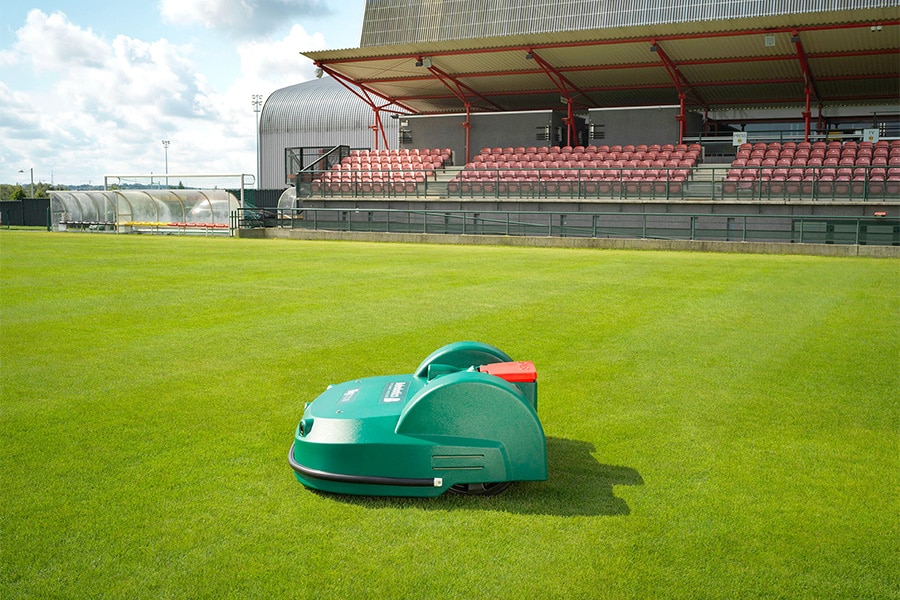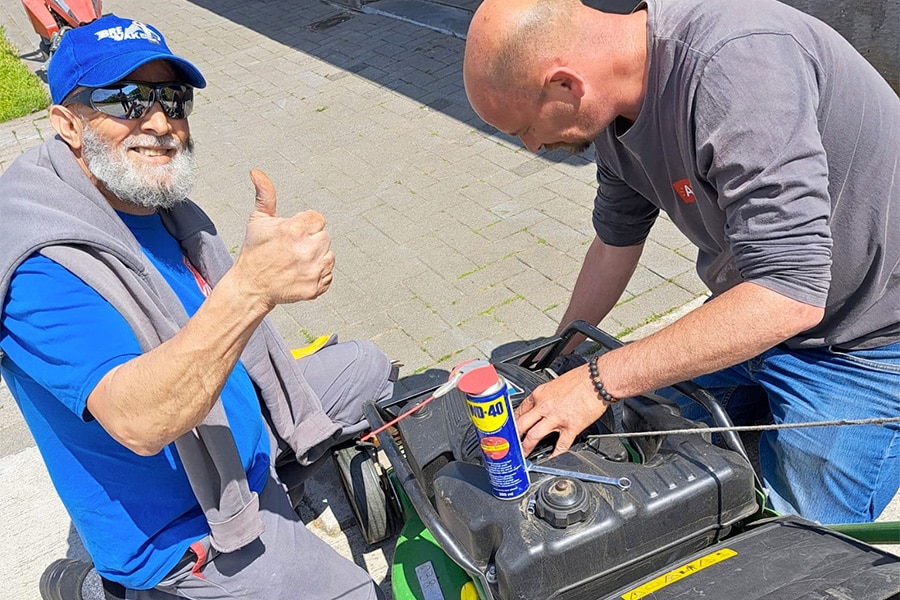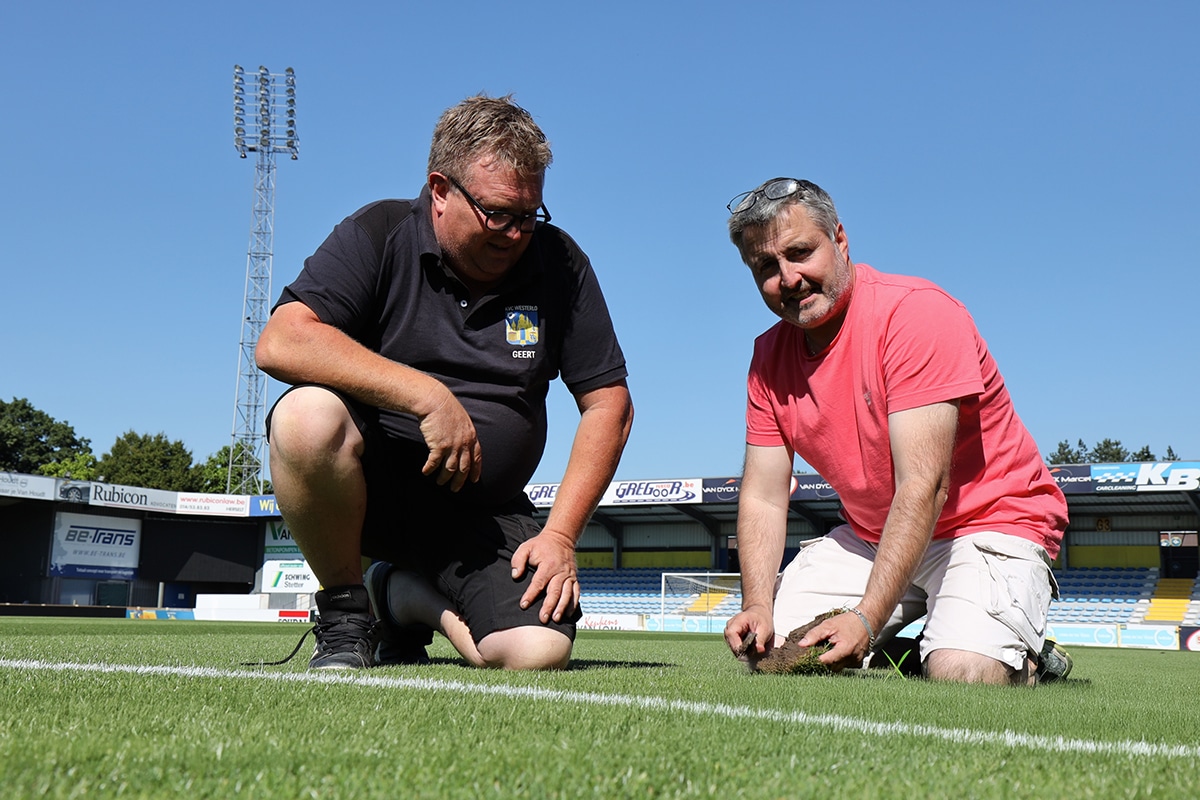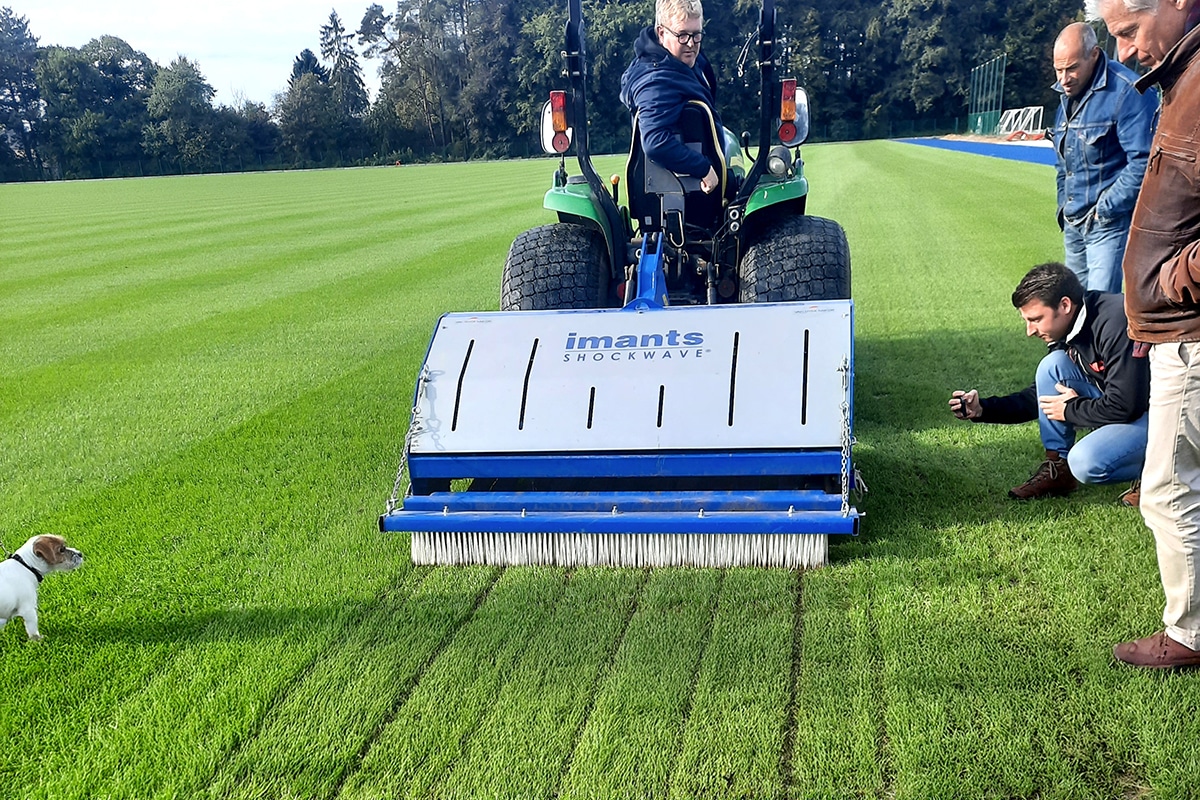
City of Antwerp: Green Deal sports domains in action
Robotic mowers make green service more efficient
In order to make sports domains greener and more sustainable, several partners - Sport Flanders, the Flemish Environmental Society, the Flemish Sports Federation and Netwerk Lokaal Sportbeleid - and the Flemish government have put their backs into the Green Deal Sportdomeinen. Logical, if you know that Flanders has almost 10,000 outdoor sports domains with an area of more than 17,500 hectares.
The Green Deal Sports Domains - not to be confused with the European Green Deal! - embraces soil quality, the efficient water management of sports grounds, the reduction of pesticides and the embedding of sports space in so-called green-blue vein networks, among other things. The government, together with various public partners and private actors, will share their knowledge regarding the construction, maintenance and use of outdoor sports grounds, such as soccer fields, golf courses, gravel fields, natural grass or artificial turf fields.

Robotic mowers for large areas
One of the actors that very quickly saw the need for this and jumped on the bandwagon is Belrobotics of Waver. In the early 2000s, Belrobotics took its first steps into the commercial robot market. Belrobotics' robotic mowers are used to maintain sports facilities (soccer, rugby, golf), private gardens of all sizes, and the green spaces around business parks, hospitals, hotels, country clubs, local government agencies, military bases, airports...
Mick Van Keer, Machineland (Antwerp Region): "Machineland is the regular partner of the city of Antwerp for supplying several horticultural machines, including Belrobotics brand robotic mowers.
This brand has made a name for itself with professional robotic mowers for large areas (up to 75,000 m² due to GPS-RTK data) including golf courses, soccer fields... We have been supplying robotic mowers to the city of Antwerp for five years, mainly the mowers suitable for 12,000 m² and 24,000 m². We work very closely with Steven Papen for that."
Challenges
Steven Papen, team leader City of Antwerp: "We don't have the title 'greenkeeper,' but we have been honing our know-how for fifteen years now. We are a team of six and responsible for the maintenance of 23 soccer fields of natural grass and 14 artificial grass fields in Greater Antwerp. When I took over the job from a colleague about fifteen years ago, the regeneration process was quite simple. It consisted of treatment with Bofix, leveling with topsoil, and overseeding. After the VMM campaign (www.zonderisgezonder.be), we changed tack. Because, after all, as a public service we hold an exemplary position."
"But puddling was a big problem. We addressed that by vertidraining during reclamation and dragging in white sand to get better water drainage. In addition, the fertilizers we were using were more suited to cultivation rather than turf; we looked for a solution to that, too, and found it in coated long-acting fertilizers, with an NPK adapted to distribution three times a year. Together with vertidraining, this provided more targeted nutrition and oxygen for the grass. Which, of course, made the grass grow even better and made it a challenge to keep up with the growth. And that's how robotic mowers came into focus."

Mowing at night as well as during the day
Steven Papen: "The robotic mowers have supported us for several years now and this works very well. It saves us time and machinery, no employee has to drive to the field twice a week to mow, and there is no mowing waste. The robots are on-site and can mow at night as well as during the day. You can track everything in the app. Also error messages and/or alarms, so we can intervene quickly, if necessary. Moreover, you can program different schedules or decide à la minute to start the robot remotely."
"The robotic mowers are very important to the city because they leave more space for the staff to do other important tasks. They used to have to put someone on the riding mower multiple times a week to mow each field multiple times, where now the robotic mower does it for them in a fully automated way. The constant "mulching," throwing the grass back into very finely cut sections, also provides natural fertilization. So that theoretically reduces the amount of fertilizer you use as an end customer. A good thing," concludes Mick Van Keer.




